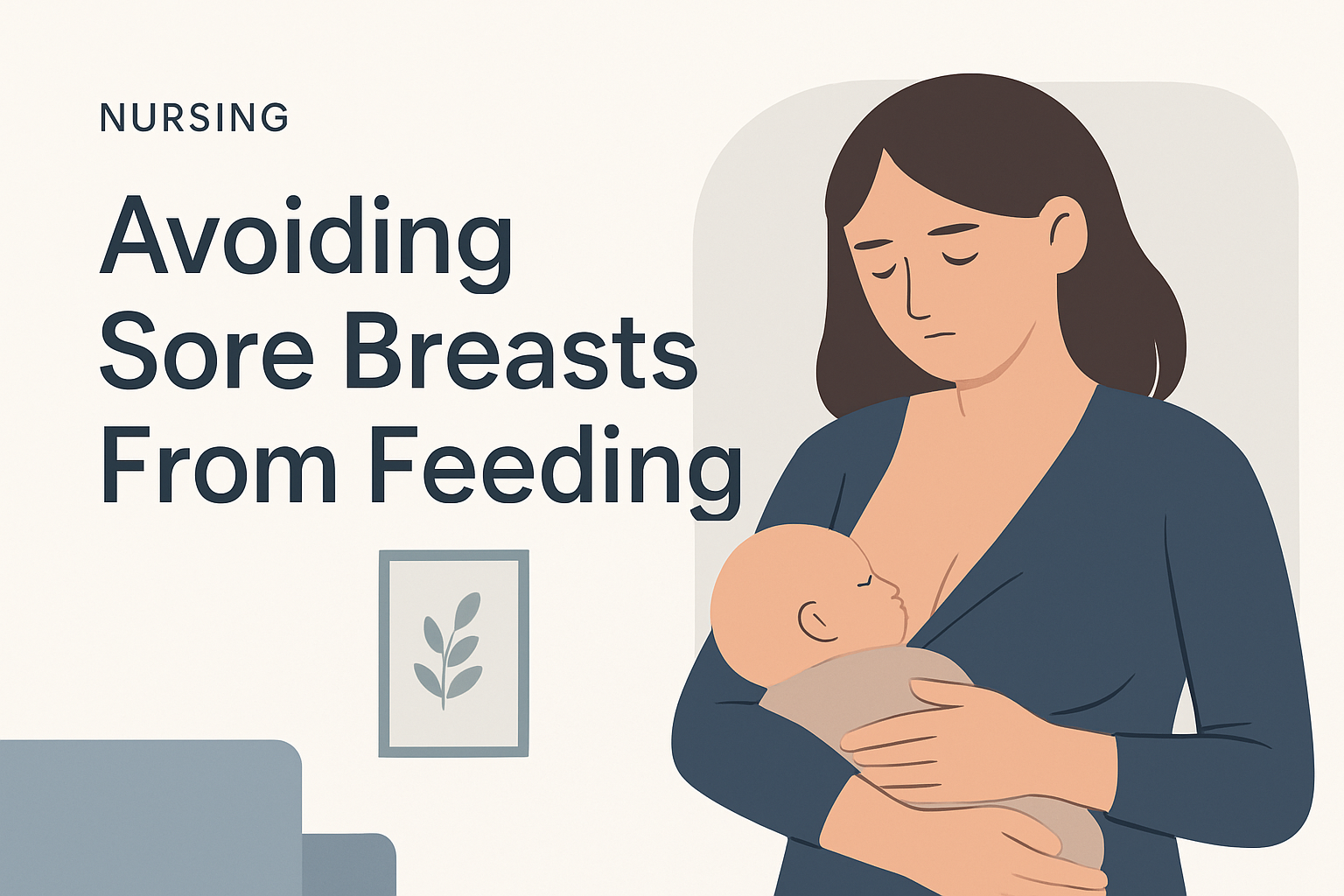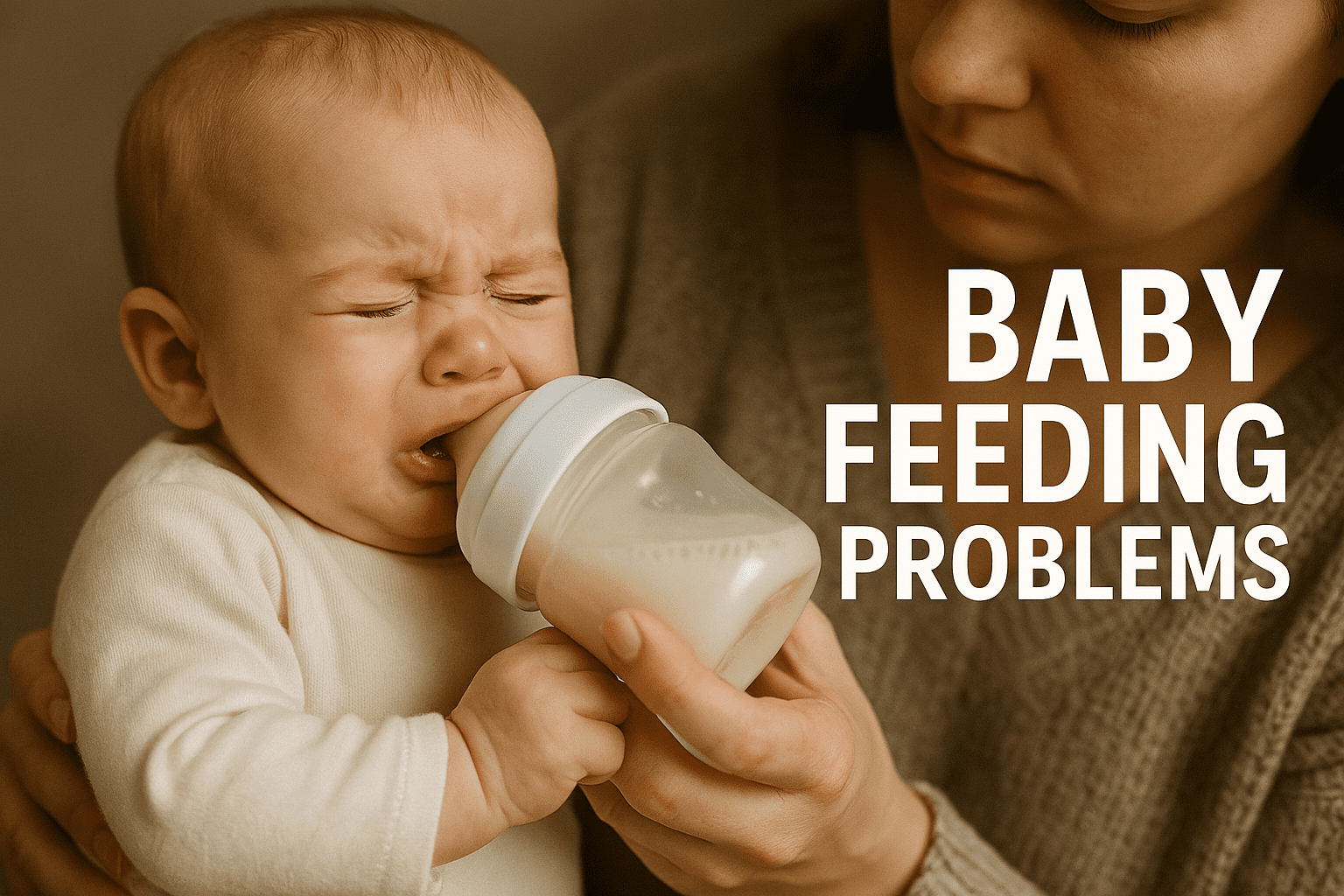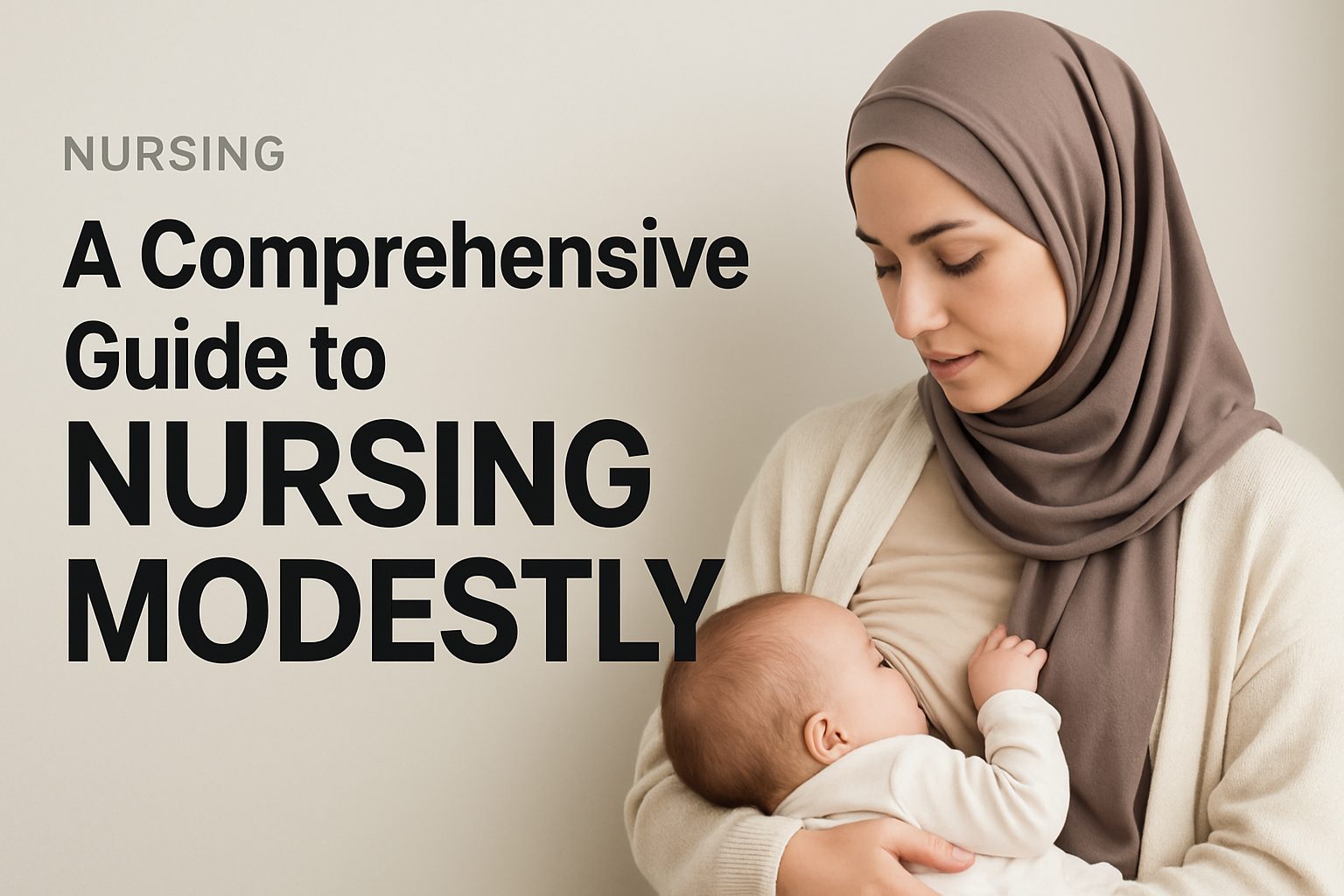
Breastfeeding is a beautiful and natural way to bond with your baby. It also provides essential nutrients for their development. Unfortunately, sore breasts can sometimes be an issue during the breastfeeding process. As a lactation consultant, I have seen many mothers struggle through this and it’s something that no mother should ever have to experience! In this article, we will explore some tips on how you can avoid soreness when feeding so that you can get back to enjoying those precious moments with your little one.
The first step in avoiding discomfort while breastfeeding is making sure you are doing it correctly. This means finding a comfortable position that allows your baby to latch onto the breast comfortably and easily. You may need to adjust the positioning of the baby or reposition yourself until both of you feel comfortable and secure before beginning to feed. Additionally, make sure your bra isn’t too tight – wearing a well-fitting nursing bra ensures adequate support while leaving plenty of room for your baby’s mouth as they nurse.
Finally, try varying which side you start each session on; if you usually begin by offering the right breast, switch things up, and offer the left at least once in a while. Nursing from alternating sides helps ensure even milk production since babies tend to favor one side over another due to comfort levels or ease of access (e.g., tongue tie). By following these steps, you should be able to reduce any potential pain associated with nursing sessions significantly!
Definition Of Breastfeeding Pain
Breastfeeding is a beautiful experience for mothers and their babies. It gives them an opportunity to bond with one another, and it has tremendous health benefits for both the baby and mother. But sometimes, breastfeeding can be painful. Soreness of the nipples or breasts that makes nursing uncomfortable is known as ‘breastfeeding pain’. It can range from mild soreness to severe nipple cracks and blisters depending on how long you have been nursing your baby.
It’s important to understand what may be causing this discomfort so that you can take steps to avoid it in the future. The most common cause of breastfeeding pain is incorrect latch-on technique, where the baby does not attach properly at the breast while feeding which leads to friction between your skin and your baby’s mouth. Other causes include clogged milk ducts, inverted/flat nipples, poor positioning during feedings, improper support when holding your baby while nursing, trauma including cracked nipples due to aggressive sucking by the newborn or biting (in older children).
Causes Of Sore Breasts
When it comes to sore breasts while breastfeeding, there are several potential causes. Lactation consultants have identified four primary sources of discomfort that mothers may experience:
- Poor latching or positioning
- Engorgement and oversupply
- Inverted nipples or flat nipples
- Infection or mastitis
It is important for a mother to understand the root cause of her pain in order to find an effective solution. Poor latch can be corrected with guidance from a lactation consultant who can help establish proper positioning and technique. This will ensure that baby can maintain suction on the breast for an adequate amount of time during feeding sessions, resulting in less strain on mom’s nipple area and more efficient milk transfer. If engorgement or oversupply is present, moms should consider utilizing block feeding or paced bottle-feeding tactics which allows them to control how much milk their infant consumes at each feed as well as allowing relief between feeds, reducing pressure on sensitive areas near the nipple region. Flat or inverted nipples require different methods than regular breastfeeding; however, specialized pumps exist specifically designed for this purpose and many mothers have found success using these devices along with other techniques recommended by their lactation consultant such as massage and compression nursing. Lastly, infection and/or mastitis requires prompt treatment before returning to normal breastfeeding activity; antibiotics may be necessary if the infection is severe enough so consult your physician immediately upon noticing any signs of redness, swelling, heat, itchiness or pus like discharge around the affected area.
With knowledge about possible causes of sore breasts during breastfeeding combined with expert advice from a certified lactation professional, mothers can take proactive steps towards achieving successful pain-free nursing sessions for both themselves and their babies!
Proper Latch Techniques
It’s essential to ensure you have a proper latch when breastfeeding in order to avoid sore breasts. To achieve this, start by positioning your baby close to the breast and ensure their head is facing the nipple. Make sure they are open mouthed and that the lower lip protrudes slightly. You can then bring them onto your breast and press gently until their mouth covers as much of the areola as possible. If it’s not quite correct, try again – patience is key! Once latched on correctly, babies will usually make a swallowing motion with each suckle which indicates a good latch-on has been achieved.
If you experience any discomfort or pain during feeding, take your baby off before continuing so that further damage isn’t caused. With practice, latching should become easier and more comfortable for both mother and infant over time. It’s important to remember that if you ever feel overwhelmed or need help, reach out to an experienced lactation consultant who can provide guidance and support.
Supporting The Breast During Feeding
As you continue your journey with breastfeeding, it is important to ensure that you are supporting the breast during feeding. With proper technique and a few helpful tips, you can make sure your breasts stay healthy and comfortable throughout nursing.
The first step to properly support the breast during feeding is getting into a comfortable position. Sitting upright in a chair or reclining on a bed both work well for this; either way, be sure to have plenty of pillows around so you don’t strain yourself while holding your baby. Additionally, make sure that your baby’s neck and head are supported by something like a nursing pillow or blanket rolled up snugly behind them. This will help keep their body in line with yours as they feed.
| Positioning | Comfort Level |
|---|---|
| Upright Chair | High |
| Reclined Bed | Medium |
Next, it is key to use an appropriate hold when positioning the baby at the breast. A good latch begins with putting the baby close enough that they can easily reach the nipple without straining, then using one hand (usually supporting underneath) to bring them onto the breast. Make sure there is enough space between their chin and chest so that your little one has easy access to milk flow – if their nose gets squished against you too much, they won’t be able to breathe comfortably! Once they’re latched correctly, adjust yourself as needed until everything feels secure but not overly tight.
Finally, always remember that no two babies are exactly alike – what works for one may not work for another! You know best when it comes to finding positions and holds which provide comfort for everyone involved in each individual breastfeeding session. Be patient with yourself and remain open-minded about trying different techniques until you find what works perfectly for both of you!
Breastfeeding Positions
When it comes to avoiding sore breasts from feeding, one of the best things you can do is ensure that you find a comfortable breastfeeding position. This is something that takes practice, and there’s no right or wrong way — whatever works for both you and your baby is the right choice! It’s important to experiment with different positions until you find what feels most comfortable. A few common positions include lying down on your side while holding your baby close; using pillows or cushions as support when reclining or sitting up in a chair; and even standing while leaning against a wall.
Most importantly, make sure that your baby has an adequate latch during each feed. If their tongue isn’t positioned correctly this can cause nipple pain, so be mindful of any signs of discomfort from either yourself or your baby. If needed, don’t hesitate to ask for help from a lactation consultant who will be able to give more specific advice tailored to you and your individual situation.
Alternating Breasts During Feeds
Once you have mastered different positions to feed your baby, it is time to move onto alternating breasts during each session. Alternating breasts helps ensure that both sides are emptied and allows for a more even milk production from one side to the other. This can help reduce soreness in the breasts which tends to occur when too much pressure is put on one particular breast over an extended period of time.
In order to alternate throughout the feeding session, start with one breast first until your baby stops sucking or falls asleep. Then burp them before switching to the other side for the remainder of the feeding session. If your baby refuses to switch sides, keep trying as this will get easier with practice as they become used to it. Make sure you offer plenty of skin-to-skin contact between feeds as well so they know where their food source is located.
By following these practices regularly you should be able to prevent any unnecessary discomfort while also ensuring that your baby is getting all the nutrients they need. So make sure you take some extra time out of each nursing session and change up those sides!
Paying Attention To Baby’s Cues
Paying attention to your baby’s cues is essential when it comes to avoiding sore breasts from feeding. Babies should be allowed to feed at their own pace and for as long as they want. If a baby appears disinterested in the breast or has fallen asleep while nursing, gently try to wake them by rubbing their back or stroking their cheek. A tired baby may not latch properly, which can lead to nipple tenderness and discomfort. Look for signs that your baby is full; these could include turning away from the breast, decreased sucking activity, or releasing their mouth from the nipple on its own accord. Burping your baby periodically throughout a feeding session can also help avoid overfeeding and reduce any further irritation of the nipples.
It’s important to remember that babies’ appetites vary greatly according to age and development stage. Consequently, trust your newborn’s instincts during each feeding session – if she wants more milk than usual one day but less than usual another day, then go with her flow! This will ensure that both you and your infant are comfortable during every feed and prevent any issues related to sore breasts.
Monitoring Milk Supply And Intake
As a mother, the fear of your breasts becoming sore can be overwhelming. It’s like walking on eggshells; any wrong move and you know the consequences will not be pleasant! That is why it is so important to monitor your milk supply and intake when breastfeeding.
To begin with, always make sure that both breasts are being emptied during each feeding session. If one breast seems fuller than the other, try compressing or massaging it after baby has finished nursing to ensure all of the milk is removed. Additionally, check for signs of engorgement by feeling along your entire breast – if there are any lumps or hard spots, then manual expression may be necessary as well.
Knowing how much your baby consumes in each feed is also essential for avoiding soreness. Your little one should have at least 8-12 wet diapers per day which indicates they’re drinking enough during their feeds. You could also weigh them before and after a feed – if there’s an increase in weight then this suggests they’ve had sufficient nutrition too. Taking these steps regularly means you can identify any potential issues quickly and get ahead of them before they become problematic.
These simple but effective measures can help avoid pain while ensuring your baby gets vital nutrients from breastmilk – ultimately, providing peace of mind to both mother and child alike!
Adequate Hydration For Nursing Mothers
Maintaining adequate hydration is a key factor in avoiding sore breasts while breastfeeding. Nursing mothers should strive to drink plenty of fluids throughout the day, but especially during and after nursing sessions. This can help keep milk production flowing smoothly and prevent engorgement due to milk buildup. Additionally, drinking more water may also help reduce other uncomfortable symptoms such as fatigue or headaches that can accompany dehydration.
It’s best to focus on hydrating with plain water rather than caffeinated beverages, alcohol, or sugary drinks; these items can interfere with milk supply and cause dehydration instead of helping you stay hydrated. However, if desired, small amounts of caffeine are generally considered safe for use by nursing moms when consumed in moderation – typically no more than 200-300 milligrams per day (about 1-2 cups of coffee). Keeping your fluid intake consistent throughout the day will be helpful in keeping up your energy levels and preventing unwanted discomfort from breastfeeding.
Avoiding Allergens And Triggers
It is important to be aware of potential allergens and triggers that can cause sore breasts. Start by examining your baby’s diet and lifestyle habits, as well as yours, for anything that could potentially have an effect on the breastfeeding experience.
Here are some common things to look out for:
- Baby’s Diet:
- Allergens such as cow milk proteins or soy products in formula
- Excess Caffeine intake from food/drinks like chocolate, coffee, tea etc.
- Certain medications taken by baby or mother
- Lifestyle Habits:
- Poor positioning during feedings
- Uncomfortable clothing or bras worn while feeding
- Stress levels (which can lead to changes in hormones)
As a lactation consultant, I always recommend keeping track of any dietary or lifestyle changes you make during the course of your breastfeeding journey – this helps keep tabs on what works best for both yourself and your baby! Monitoring closely will ensure that you recognize any issue before it becomes too severe.
Regular Breaks From Feeding
Moving on from avoiding allergens and triggers, lactation consultants also suggest taking regular breaks from feeding. This is to ensure that the baby gets enough rest and isn’t constantly nursing or drinking milk. Taking periodic pauses in between feedings can help prevent sore nipples as well as reduce the likelihood of overfeeding.
In addition to giving your baby a break, it’s important for moms to take one too. Make sure you’re getting some alone time away from your little one so that you can relax and recharge. If possible, find someone who could watch your baby while you go out for a bit and do something special like get a massage or have lunch with friends. You’ll come back feeling refreshed and ready to give your best at breastfeeding!
Massaging The Breasts Before Or During Feeding
Massaging the breasts before or during feeding can help reduce discomfort and soreness. Imagine yourself taking a moment to soothe your body with gentle, circular strokes over your chest, beginning at the base of the breast and moving up towards the nipple in slow motions – this is an effective way to massage your breasts prior to latching on for breastfeeding.
The use of a small amount of oil helps make massaging even more beneficial; it not only relaxes tight muscles but also improves blood flow throughout the area. Choose oils that are safe for baby such as coconut, almond, avocado, jojoba, or grapeseed. When using any type of oil while nursing, ensure that you don’t apply too much directly onto the nipples as this will create a slippery surface which may cause difficulties when attempting latch-on. Massage should be done slowly and gently in order to get maximum benefit from it. Additionally, try to focus on any areas where there might be tension or pain – these could indicate blocked milk ducts which need special attention. With regular massage and proper positioning during feedings, you should quickly notice improvement in both comfort levels and overall experience with breastfeeding!
Using Warm Compresses Or Cool Packs
Then, using warm compresses or cool packs can help reduce soreness. To use a compress, soak a soft cloth in lukewarm water and gently massage the area for 5-10 minutes. This helps to relax the breast tissue and can provide relief from pain. For cooling, put an ice pack wrapped in a towel on your breasts for 10 to 15 minutes at a time throughout the day; this may also help with inflammation. Be sure not to apply these directly onto the skin as it could cause further discomfort.
Additionally, if you are experiencing severe discomfort that does not improve after trying different methods of relieving pain, contact your healthcare provider right away. They may be able to give you additional advice on how to cope with soreness due to breastfeeding or suggest other solutions such as medication or support pumps. With proper care, most cases of breast soreness will resolve quickly and effectively without any long term effects.
Wearing A Supportive Bra
Supportive bras can be a lifesaver for breastfeeding mothers. It’s like having an extra layer of protection against sore, tender breasts caused by feeding. Wearing a well-fitted bra with wide straps and ample coverage is essential to alleviate any discomfort during or after nursing sessions.
When choosing a bra, make sure it has adjustable straps so that the fit can be customized to your body shape. Look out for features such as reinforced side panels and seamless cups; these will provide additional support when you need it most. In addition, opt for breathable fabrics that allow air to circulate around your skin, keeping you comfortable even on the hottest days. Remember: no matter what type of material you choose, always ensure the fabric is soft so that it doesn’t irritate your delicate skin while you nurse your baby.
As any experienced mother knows, finding the right combination of comfort and support in a bra can feel like searching for buried treasure – but don’t give up! With patience and some trial and error, you’ll soon find yourself wearing something both supportive and stylish – providing much needed relief from those dreaded breast pains associated with breastfeeding.
Contacting A Healthcare Provider
In addition to wearing a supportive bra, it’s important to contact a healthcare provider if you are experiencing soreness or discomfort in your breasts. A lactation consultant can help identify any underlying causes and provide strategies for preventing and managing soreness.
Your doctor may recommend that you take certain measures to avoid soreness from breastfeeding, such as changing the way you latch on or adjusting your nursing position. They might also suggest trying different feeding methods like paced feeding, which involves allowing your baby to feed at their own pace until they’re full. Other options include block feeding and cluster feeding, both of which have been shown to be beneficial for avoiding breast pain while still providing adequate nutrition for your infant.
It’s essential that mothers seeking relief from soreness speak with a professional about the best course of action for them and their baby. With the right support, breastfeeding can become more comfortable and enjoyable for both mother and child.
Conclusion
As a lactation consultant, I’ve seen first-hand how painful and discouraging breastfeeding can be for mothers who experience sore breasts. Although it’s common to have some discomfort when you’re just starting out, there are several steps you can take to help avoid this issue in the future.
By following proper latch techniques and using supportive positions while feeding your baby, as well as taking time to massage your breasts before and during feedings, you will find that soreness is no longer an obstacle in the way of successful breastfeeding experiences. Additionally, using warm compresses or cool packs on your nipples after each feeding session may also provide relief from any existing pain. Finally, wearing a supportive bra is essential to keep your breasts comfortable throughout the day.
In fact, according to recent research by WHO/UNICEF, exclusive breastfeeding has been found to reduce infant mortality rates by 13 percent worldwide1 – so don’t let breast discomfort get in the way of forming a healthy bond with baby! With these tips and tricks in mind, sore breasts should become a thing of the past.
Frequently Asked Questions:
What are the common causes of sore breasts during breastfeeding?
Common causes of sore breasts during breastfeeding include poor latching or positioning, engorgement and oversupply, inverted or flat nipples, and infection or mastitis.
How can I ensure a proper latch to avoid breastfeeding pain?
To ensure a proper latch, position your baby close to the breast with their head facing the nipple. Make sure their mouth is open wide and the lower lip protrudes slightly. Bring them onto the breast so their mouth covers as much of the areola as possible. If discomfort occurs, unlatch and try again.
What are some effective breastfeeding positions to reduce soreness?
Effective breastfeeding positions include lying on your side while holding your baby close, using pillows or cushions for support while reclining or sitting up, and even standing while leaning against a wall. Experiment to find what works best for you and your baby.
How can I monitor my milk supply to prevent sore breasts?
Monitor your milk supply by ensuring both breasts are emptied during each feeding session. Check for signs of engorgement, such as lumps or hard spots, and manually express if necessary. Track your baby's wet diapers (8-12 per day) or weigh them before and after feeds to ensure adequate intake.
When should I contact a healthcare provider about breastfeeding pain?
Contact a healthcare provider if you experience severe discomfort that doesn’t improve with self-care measures, signs of infection (redness, swelling, heat, or pus-like discharge), or if your baby struggles to latch properly despite trying different techniques.






